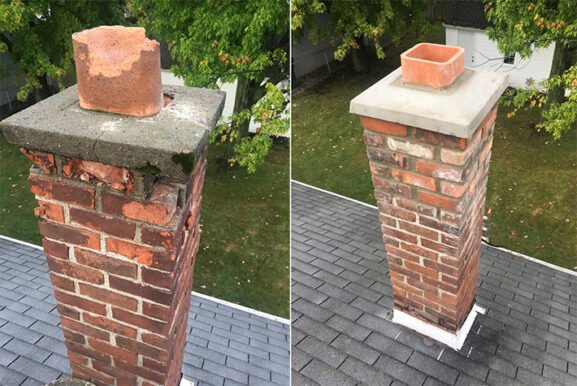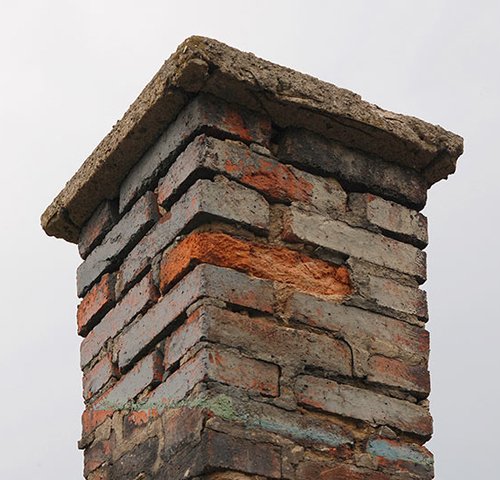How to Repair a Chimney Cap the Right Way for Long-Lasting Protection
Key Takeaways
- A damaged chimney cap can lead to moisture, pests, and structural chimney damage if left unaddressed.
- Most chimney cap issues can be resolved with basic tools, but safety and inspection are critical before starting repairs.
- Proper sealing, refitting, or replacement ensures long-term performance and protection against weather and debris.
- Regular inspection helps prevent recurring damage and extends the life of your chimney system.
Understanding the Role of a Chimney Cap
A chimney cap is one of those small features on a home that plays a big role. Installed at the top of the chimney, it acts as a protective cover that keeps rain, snow, debris, and animals out. It also prevents sparks from flying out, which could lead to rooftop fires. When a chimney cap is cracked, dislodged, or rusted, these protective functions break down, and the chimney becomes vulnerable to moisture, pests, and even internal damage.
Chimney caps are often made of stainless steel, galvanized steel, aluminum, or copper. Over time, weather exposure and wear can cause them to loosen, rust, or develop holes. Addressing these issues early prevents more costly repairs down the line.
Signs Your Chimney Cap Needs Attention
Before making repairs, it’s important to recognize the warning signs. Here are some of the most common indicators that your chimney cap may be compromised:
- Rust streaks or corrosion on the cap or chimney
- Water leaks in the fireplace after rain
- Debris or nesting materials near the flue
- Whistling or wind noise from the top of the chimney
- A visibly crooked or missing cap
If you notice any of these signs, the cap is either damaged or not functioning properly and needs to be inspected immediately.
Inspecting the Chimney Cap Safely
Start with a visual inspection from the ground using binoculars. If the cap looks tilted or you see signs of rust, it’s time for a closer look. Use a sturdy ladder and ensure proper fall protection if you’re inspecting the cap yourself. Be mindful of loose shingles or a steep pitch on the roof, which can be dangerous.
Check if the cap is secured tightly and look for cracks, rust holes, or mesh damage. If you’re unsure about climbing on the roof, it’s best to hire a chimney professional for an inspection.
For safety guidelines, the Chimney Safety Institute of America (CSIA) offers valuable advice on chimney inspections and maintenance.
Steps to Repair a Loose or Damaged Chimney Cap
If the damage is minor, you may be able to fix the cap yourself. Here’s how to go about it:
Tightening a Loose Chimney Cap
Over time, high winds and thermal expansion can loosen the screws or brackets holding the cap in place. To fix this:
- Wear protective gloves and safety goggles.
- Use a cordless drill or screwdriver to re-tighten the mounting screws.
- Check that the cap sits flush on the crown and doesn’t rattle or shift.
- For extra security, you can apply a high-temperature silicone sealant around the base of the cap to create a watertight seal.
Sealing Small Cracks or Gaps
If the cap has small holes or cracks in the mesh or cover, a metal patch kit or high-temp sealant can be used.
- Clean the surface of the cap thoroughly with a wire brush.
- Apply a metal bonding epoxy or sealant over the affected area.
- Allow the product to cure fully before using the fireplace again.
This approach works best for small holes or early-stage rust before the damage compromises structural integrity.
When to Replace the Chimney Cap Instead of Repairing It
Sometimes, a repair just isn’t enough. If the cap is severely rusted, warped, or has missing parts, replacing it is the smarter move. A new chimney cap ensures complete protection and often comes with warranties if installed correctly.
Here are signs that a replacement is the better option:
- Rust has eaten through the metal
- The mesh screen is detached or missing
- The entire unit is unstable or has fallen off
- There is repeated animal intrusion despite past repairs
When replacing the cap, take accurate measurements of your flue or chimney crown. Chimney caps are not one-size-fits-all, so getting the right size and shape is essential. Universal caps are available, but custom-fit options often last longer and provide better sealing.
Material Matters When Choosing a Replacement Cap
If you’re in the market for a new chimney cap, choosing the right material will impact both durability and performance. Here’s a quick comparison:
- Stainless Steel: Long-lasting and rust-resistant, ideal for wet or coastal climates.
- Copper: Attractive and highly durable, but more expensive.
- Galvanized Steel: Inexpensive but prone to rusting if not coated properly.
- Aluminum: Lightweight and corrosion-resistant, though less sturdy under strong winds.
Stainless steel caps are often recommended because they offer the best balance between cost, durability, and weather resistance.
Preventing Future Damage with Smart Maintenance
After repairing or replacing a chimney cap, ongoing maintenance is key to keeping it in good shape. Include the cap in your seasonal home maintenance checklist. Here are a few ways to stay ahead:
- Clean the cap annually to remove soot and debris.
- Inspect after severe storms or high winds.
- Check for nesting birds or wasp activity during spring and summer.
- Have a certified chimney sweep perform a full chimney inspection once a year.
These habits will help spot potential problems early and extend the life of your chimney system overall.
Final Steps That Make a Difference
Finishing a chimney cap repair isn’t just about tightening screws or sealing holes. It’s about confirming that the cap is aligned, tightly secured, and free of defects that could invite future problems. After any repair, monitor the fireplace area for signs of moisture or airflow changes. These can be early signs that something is still off at the top of the flue.
Addressing a chimney cap issue the right way ensures long-term protection for your chimney, fireplace, and even your roof. It’s a small component with a major job, and keeping it in good shape saves you money, time, and stress down the road.

